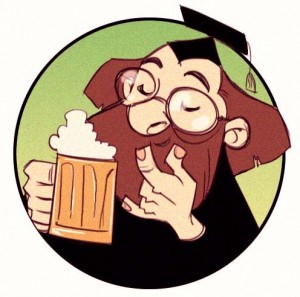 My latest Beer 101 has been out for a bit (I always seem to neglect checking when it goes up). This month I take a look at how we get bubbles into our beer and what they do to it when they get there. Yes, I know that carbonation won’t get most beer drinkers effervescent at the thought of talking about it, but I do feel it is often taken for granted. As I mention in the column, we often talk about how much carbonation there is or lively the beer is, but rarely do we talk about the carbonation qualities of the beer. And I think we should. Anyone who has drank uncarbonated or under-carbonated beer (Molson M, anyone?) will know how important it is to finishing the beer.
My latest Beer 101 has been out for a bit (I always seem to neglect checking when it goes up). This month I take a look at how we get bubbles into our beer and what they do to it when they get there. Yes, I know that carbonation won’t get most beer drinkers effervescent at the thought of talking about it, but I do feel it is often taken for granted. As I mention in the column, we often talk about how much carbonation there is or lively the beer is, but rarely do we talk about the carbonation qualities of the beer. And I think we should. Anyone who has drank uncarbonated or under-carbonated beer (Molson M, anyone?) will know how important it is to finishing the beer.
It is not just about making the beer more alive, although it is that too. Carbonation sharpens and dries out the beer, offering a bit of acidity to balance residual sweetness. Of course, it is also the main reason our beer has head. With out carbon dioxide trying to escape, there is nothing hold at the top of the beer. (I must admit that I rather enjoy how in the column I describe head as a kind of traffic jam. That kind of tickled my fancy.)
Maybe another day I will engage in the debate between natural and forced carbonation and which produces a better bubble. For now I will content myself at finding a way to discuss carbon dioxide that isn’t boring (or at least I hope isn’t boring). Read the whole Beer 101 here.

August 3, 2011 at 12:23 AM
Speakng of ‘tiny bubbles’, I came across an interesting post entitled ‘Guinness Science’ ob http://www.reddit.com/r/beer. (you may need to look back a couple pages but there;s a great youtube video on the physics to a pint of Guinness).
And while I’m here,
http://drinkwiththewench.com (look for ‘Intl. IPA Day’, Aug. 4th)
&
http://www.internationalbeerday.com/about/ (Intl. Beer Day, Aug. 5th)